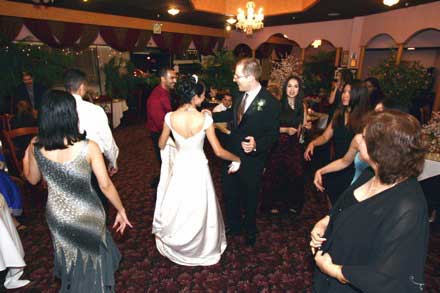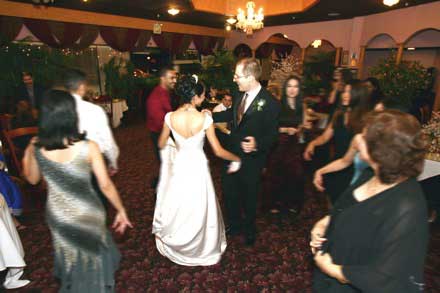
The Digital Photography Book
by Scott Kelby
Peachpit Books
http://www.peachpit.com
ISBN 0-321-47404-X
219 pages
$19.99 US, $13.99 CN £13.99 UK
Author, Photoshop guru, and photographer, Scott Kelby is widely known for his popular tips books about such creative software as Adobe Photoshop CS2 and Elements, Apple’s OS X, and even tip books for the iPod.
Written in his lucid, often wry humorous style, his books are generally filled with one to two page tips and how-to strategies that help you get right at the bone of the subject at hand. He always shares those often hidden application features or strategies that many authors either bury in long paragraphs of their books or simply overlook.
Kelby is interested in getting you into the nuts and bolts of the subject matter. If you’re looking for lots of theory and explanations, his books are not for you. But if you’re looking for quick tips that are often right on target for what you need, then Kelby’s books are a good resource.
In this his latest gem, Kelby addresses the topic of digital photography. I’ve reviewed several books on this subject for MyMac.com, but this particular book is the first one of it’s kind–as far as I know at least.
The Digital Photography Book is filled with 200 or so tips and strategies for different types of photography. If you’re into wedding photography, or nature, sports or travel photography, and you’re not a long-time professional in these areas, then you’re sure to discover very useful tips and strategies in this book.
His tips include recipes for setting formal group shots at a wedding, getting soft diffused light with a flash, shooting sharp pictures of flowers with a zoom lens (by the way, if you can’t find good flowers to shoot, Kelby recommends that you just go buy some and have it), shooting in aperture priority mode, composing great landscapes, pre-focusing for action shots, using canvas or muslin for background portrait shots, changing the ISO on the fly, hiring a model for certain shots (it’s cheaper than you think), shooting the moon, and host of other shots and shooting situations that you as a shutterbug will want to know about.
With so tips, one way that I’m making use of books like this is by jotting down notes and tips in a set of spiraled 3×5 Spiral Index Cards (http://www.pendaflex.com/enUS/Products/Paper_Spiral_Index_Cards.html). I also cut and paste interesting photographs from magazines that I want to try out in future shoots.
Kelby’s book is perfect for the type of D.I.Y. manual that I’m keeping. Some tips I can easily remember by reading the book, while others I need to make notes for when a particular shooting situation arises.
If you’re novice photographer, however, this book may not be the best introduction to digital photography. It better serves photographers looking for solutions to various types of situations, such as what type of lenses or tripod you should buy, how to shoot in the forests, how to use your camera in burst mode, getting great light in indoor settings, and a few post processing problems and solutions that Kelby of course addresses abundantly in other books.
Since his tips are so short and direct, I don’t think Kelby would mind if I shared one directly from his book, just to give you a taste of what he offers. This one is fairly well known but useful:
Use an Aperture That Takes It All In
“When you’re shooting in a city, unless you’re shooting an object close up (where you intentionally want the background out of focus), chances are you want as much of the city in focus as possible, right? That’s why an f-stop like f/11 works great in a city. It keeps pretty much everything in focus, as long as you don’t set your focus on the closest thing in the frame—the rule of thumb is to focus on something about 1/3 of the way into the scene you’re trying to capture.”
I’ve used this exposure setting in my work, and it indeed works well.
Another little tip that Kelby shares became a solution to a series of wedding dance shots that I recently took. I wanted a way to show motion in the shots. I didn’t do what Kelby suggests for getting that kind of shot with a camera, but I was able to successfully create that motion using one of his post-processing tips.
In this photograph, the dancers look frozen in time,

but using Kelby’s tip, I was able to recreate the motion in Photoshop and also keep a nice clear focus on the bride and groom.

The trick worked like a charm—problem explained and solved in one simple paragraph. And now that I’ve used it several times, I own it forever.
There are many tips on digital photography that I thought should go in this book (more about setting white balance, using different metering modes; a few more tips on using an external flash, and more about lighting group shots.) A list of recommended camera gear for different types of photography would have been useful as an appendix to the book. He provides some tips on buying equipment, but what he suggests merely wets your appetite.
Many of these tips are not new and some of them are explored more fully in many other books, but if you’re avid photographer or someone looking to take photography to a professional level, you’ll find many tricks of the trade in this book.
Finally, though this book could useful for photographers with only a point-and-shoot camera, it’s really geared toward shutterbugs with a 35mm DSLR. In other words, you Rebel XT and Niko D70 shooters will love this book. It’s a fun read and a useful resource that you’ll want to have at your finger tips.

Leave a Reply
You must be logged in to post a comment.